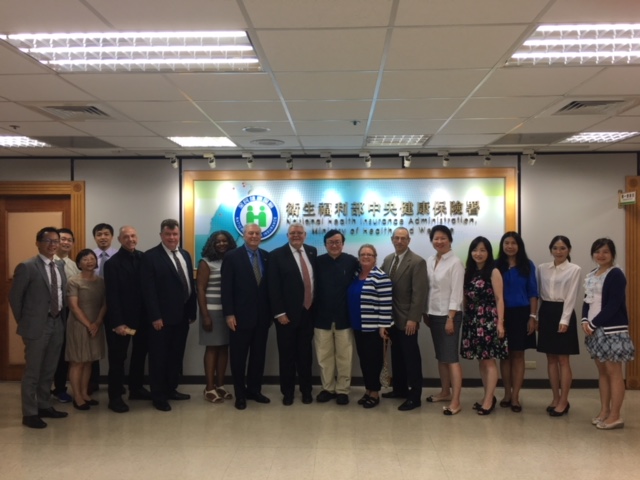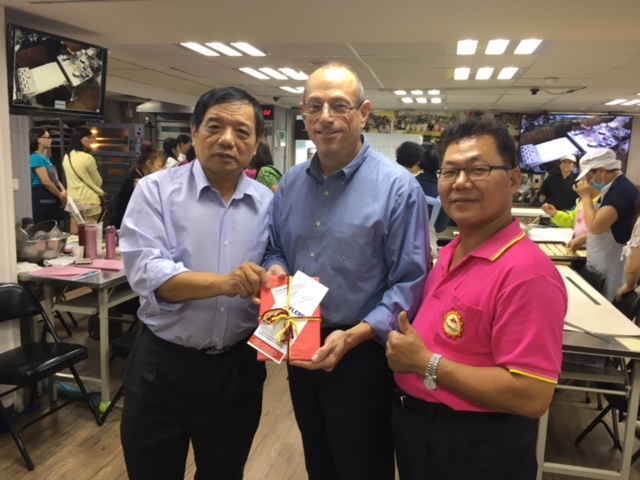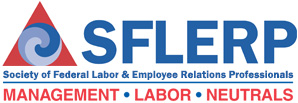By: Scot E. Schwartz, SFLERP Immediate Past-President
Imagine my surprise – receiving an invitation to participate as a member of a delegation to travel to Taiwan (Republic of China) for meetings with government ministries and Taiwanese labor unions and confederations. The Taiwanese government, headed by President Tsai Ing-wen, is working to improve working conditions and wages for workers across the country. She, through the Taiwan Ministry of Labor, is seeking to increase membership in unions and to improve the ability of unions to negotiate better working conditions. To help achieve this, the Taiwan Ministry of Labor invited eight delegates from the United States to talk about the power of organization. The delegation comprised representatives from the American Federation of Government Employees, the Communications Workers of America, the American Federation of Teachers, the Utility Workers Union of America, the International Federation of Professional and Technical Engineers, the Teamsters, and SFLERP for the week-long trip.
 Scott Schwartz and the delegation of labor leaders.
Scott Schwartz and the delegation of labor leaders.
How did SFLERP – an organization representing management, labor, and neutrals make the cut? In seeking to improve working conditions for citizens, the Taiwanese wanted labor and government officials to hear the benefits of collaboration, mutual respect, and partnership. So, while my “day job” is as a management representative, my role as President of SFLERP was just what they were looking for – a management official who believes in, and supports, collaboration. And, as the only organization devoted to bringing together the three components of labor relations in the Federal sector, SFLERP was a perfect choice.
 Scott presenting hosts with a SFLERP memento.
Scott presenting hosts with a SFLERP memento.
While I was envisioning getting in some relaxation, the Taiwanese had other ideas; this was by no means a vacation. After about 20 hours travel time, we arrived around 8:00 a.m., on Sunday, September 10. Our hosts from the Ministry of Labor met us at the airport, gathered our luggage, and proceeded to keep us up until after dinner that night so we’d become accustomed to the 12-hour time change.
See Interview of Scott Schwartz and AFGE President J. David Cox on Taiwan television: https://youtu.be/NWFhjJLvEt0
Typical days comprised four meetings – two in the morning and two in the afternoon – followed by either a casual or working dinner. For the most part, the meetings were very similar – about 30 minutes for introductions, 45 minutes for substantive exchange, and 15 minutes for a customary “gift exchange.” A representative from the Ministry of Labor, who works in the office of the official representative of Taiwan in the U.S., traveled with us and provided translation, logistical support, and just about every other service we could have asked for.
The trip was based in Taiwan’s capital, Taipei, an expansive city spreading from a bustling, modern downtown to rolling hills of apartment blocks, bedroom communities and suburbs extending for miles. We also traveled to Central Taiwan to meet with government officials of Nantou County, and to the city of Tauchung to visit the Chinese Federation of Labor, and the Taiwanese Federation of Labor. These latter groups are confederations of national unions and trade unionists working to expand union reach across economic sectors. Thus, they may have members ranging from teachers and flight attendants to factory workers and trades. (We were scheduled to meet with a union of brewery workers but had to cut back our plans due to weather.)
With that as background, the most interesting part of the trip was the substantive discussions. We met with representatives of four government ministries: Labor, Economic Affairs, Health and Welfare, and Foreign Affairs; and six union groups (labor/trade/craft/industry/confederation): the National Federation of Teachers Unions, Chunghwa Telecom Workers Union, Chunghwa Postal Workers Union, the Chinese and Taiwanese Confederations of Unions, and the Bakery and Confectionery Workers Union.
Of course before leaving on the trip I did some research into the labor union movement in Taiwan, which added to my perceptions and experiences while participating with the delegation. Taiwan has a robust, but young, labor movement. While workers’ rights issues came to Taiwan with the mass migration following the revolution in Mainland China in the late 1940s, the movement got its first major legislative push only in the mid-1980s with the creation of a Council of Labour Affairs and establishment of minimum standards of working conditions, with modifications to the law to encourage union organization in 2002. Subsequently, workers have been slow to organize, but are gaining ground with strong government support – Taiwan passed amendments to the Collective Bargaining Agreement Act, the Labour Disputes Law, and the Labour Union Law, in 2008, 2009, and 2010, respectively. Thus, with government support through the Ministry of Labor, a supportive President, and motivated unionists, the movement feels to be on the cusp of accelerating expansion. The structural economic and cultural differences between the United States and Taiwan, however, do not, to me, seem to lend to an identical approach to improving working conditions through labor union activity. For example, there are only a few large “enterprise-level” industries employing a critical mass of workers, while the U.S. has thousands. However, similar to the U.S., small businesses account for more than 98% of the Taiwanese economy and about 80% of workers. Consequently, trade and industrial unions (where workers belong to a union devoted to a particular trade or industry regardless of their particular employer) are on the rise with workers uniting for better conditions among small businesses.
Another factor in the mix is the sociological identity of workers who have traditionally worked for an employer, versus the mindset change of workers working as members of a union. That is, unions are working to change perceptions by having union members associate themselves with their union and what their union can do for them vis-à-vis their employers. An effective example of this effort to inculcate workers to union ideas is by union members wearing vests while they work identifying them to each other, to management, and to non-members, as union members. This effort to create a groundswell of “cultural” change in worker attitudes and affiliation (employer/union), added to the challenge of demonstrating just what unions can offer, is at a crucial juncture. Businesses large and small are facing a growing movement toward radical change in management operations, as well as global economic challenges. Taiwan has already seen a small number of strikes as workers flex their collective muscle for better working conditions.
But that cultural transition of workers from affiliation with an employer (remember that the vast majority of workers work for small businesses they view as “family”) to supporting a union puts many workers in the middle of a personal identity struggle. Thus, the (admittedly quite democratic/socialist) government’s efforts to organize workers towards improved working conditions are an enormous push toward change. And, while the government is supportive, the government’s goals of improved working conditions essentially pushes the legwork to achieve those goals to unions and workers, rather than governmental dictate. It seems not a bad strategy given that while the Collective Bargaining Act sets minimum standards that must be included in all labor contracts, the workers themselves will decide what, for them, will improve their conditions. They negotiate with employers, and a Division within the Ministry of Labor resolves disputes.
I wasn’t there long enough to observe whether that dispute resolution system is “rigged,” but the scant number of cases going to Ministry resolution is likely an indicator that employers and unions are slowly and effectively working toward resolution. (Some might assert that if the system were rigged, employers would view it as a “lost cause” to take a dispute to the Ministry, but I discount that view as the small number of disputes have continued relatively unchanged through multiple government administrations – both conservative and liberal.)
Another issue I found interesting was a result of the relative infancy of the Taiwanese labor movement. The movement is so young that workers don’t have a full quiver of just what to ask for. They rally against diminution in benefits, e.g. a change to pension rights met with harsh union reaction, but identifying new benefits is still a challenge; workers obtaining a guaranteed day-off per week was a major victory. Unions at enterprise-level companies are much more developed, presumably through their ability to interact with international unions. Smaller unions, however, still struggle with balancing the need to gain membership on the one hand, and showing results on the other. Thus, success in achieving smaller, incremental gains seems to be a consistent approach with smaller unions.
A visit with the Ministry of Trade provided an interesting tug-of-war between Taiwan’s goal of providing cost-effective trade exports throughout the world, and the government’s goal of improved working conditions, resulting in potentially higher-priced products. That balance is clearly, from my view, settled in favor of improved working conditions. Interestingly, the most prominent question from officials within the Ministry of Trade, sought some sense of clarification of President Trump’s message to the world on trade. (While my fear of the Hatch Act prevented me from saying much, it was fairly unanimous from those in the delegation not so constrained to express that they, like our Taiwanese hosts, couldn’t figure it out either.)
We did have a great opportunity to tour a joint government/industry facility encompassing approximately a 20-acre campus designed to train workers for industrial and technological jobs. Workers were being trained in appliance repair, computer programming, auto repair, machine tooling and cutting, etc. Due to labor needs, graduating workers frequently have one or more job offers before graduation, along with union membership. The site, and the program, were extremely impressive.
One major arena left out of the union struggle, ironically, is that Taiwanese government workers are not permitted to unionize. That said, government workers are pressuring for legislation to change that. If they are successful, given government workers’ sophistication and knowledge of labor rights, potential benefits, a large workforce, international experience, and supportive leadership, unionized government workers would likely go far to demonstrate what can be achieved through organization.
As the only member of the delegation not representing an American union, it seemed I had a special role. It appeared obvious to me by my invitation that the Taiwanese government sought to impart the concepts of partnership and collaboration between labor and management. The idea that workers doing the job can help management make better decisions, and that unions have a role and an interest in conveying that message met with a little extra applause when I introduced myself and what SFLERP is all about. Whether that message can translate outside civil service and to industry and small business is yet another challenge Taiwan faces.
